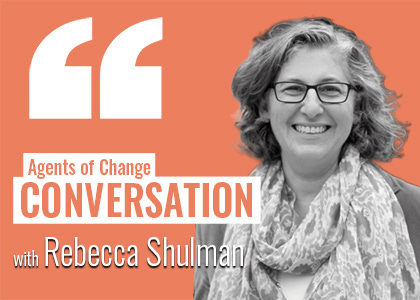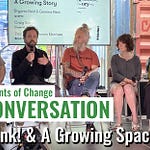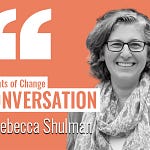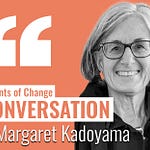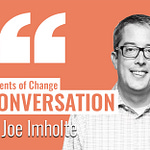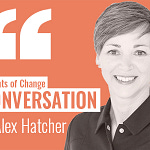Hey Changemakers,
I am so excited to continue this new series of conversations here at Agents of Change, which gives me an opportunity to bring in the insights and perspectives of some incredible thinkers doing the work of making change happen.
Don’t miss our first conversation in this series with Alex Hatcher where we talk all about the importance of developing and living organizational values.
For this episode, I am joined by Rebecca Shulman, a museum educator, evaluator, and strategic planner doing her work through Museum Questions Consulting. Rebecca has served as the Director of the Peoria Playhouse Children’s Museum, Head of Education at the Noguchi Museum, and Senior Manager in the Learning Through Art Program at the Guggenheim Museum in New York. She also wrote the book Looking at Art in the Classroom.
I first connected with Rebecca many years ago through our mutual work as museum educators, and also through our connection as museum bloggers (Rebecca writes Museum Questions, which she started over 10 years ago!). Yet it is her current dive into museum worker burnout that brings us into conversation for this episode.
If addressing workplace burnout is something you’re interested in learning more about, check out my previous posts here at Agents of Change related to this important issue:
Rebecca’s recent post “What Is Burnout?” on Museum Questions does an excellent job of pulling together some of the important research and resources around burnout and museum workplace culture, including the work of Christina Maslach. She cites Maslach’s research and writings on burnout, and include her list of six causes of burnout: Unsustainable workload, perceived lack of control, insufficient rewards for effort, lack of a supportive community, lack of fairness, and mismatched values and skills.
Our conversation hit on some key ideas, including:
Workplace burnout is an issue of organizational culture
One of the major causes of burnout isn’t workload, but rather lack of staff engagement
Leaders have a role to play in addressing burnout by working with their staff to set clear goals, aligned values, and a sense of direction.
In addition to diving into these vital topics, Rebecca also shared some closing thoughts on how we can take action steps right now to address burnout:
BE TRANSPARENT: Try to be open and transparent about the details of your feeling of burnout with your manager, and consider asking for help when it comes to solving workload issues. Is there a way to streamline these tasks, or better prioritize them?
TALK & PROBLEM SOLVE TOGETHER: Overall, Rebecca highlights the need for us to simply talk with each other more about burnout, and work together to find solutions.
I am thrilled I could reconnect with Rebecca, and get her thoughts on workplace burnout. I am grateful she could take the time to share her work and practice with the Agents of Change community.
If you want to connect with Rebecca Shulman and learn more about her work, here is the best way to do that:
Share Your Story
Do you have a story about burnout in the museum workplace?
Please consider sharing your story with Rebecca (use this link). She is looking for personal stories which illustrate any of the six causes of burnout (see above or Rebecca’s blog post), OR something your museum is doing that is a positive example of limiting workload, offering employees control, rewarding individuals for effort, supporting staff, demonstrating fairness, or aligning staff and institutional values and skills.
Did you know that Agents of Change has a paid subscription option? Paid subscribing gives you access to additional posts. It’s also a way to support the work it takes to create this Substack (thank you!!).
And if you are curious to know more about some of the different kinds of services I do - including the creative work I do with nature and place-based arts nonprofits, have a look at my project page and services page.



